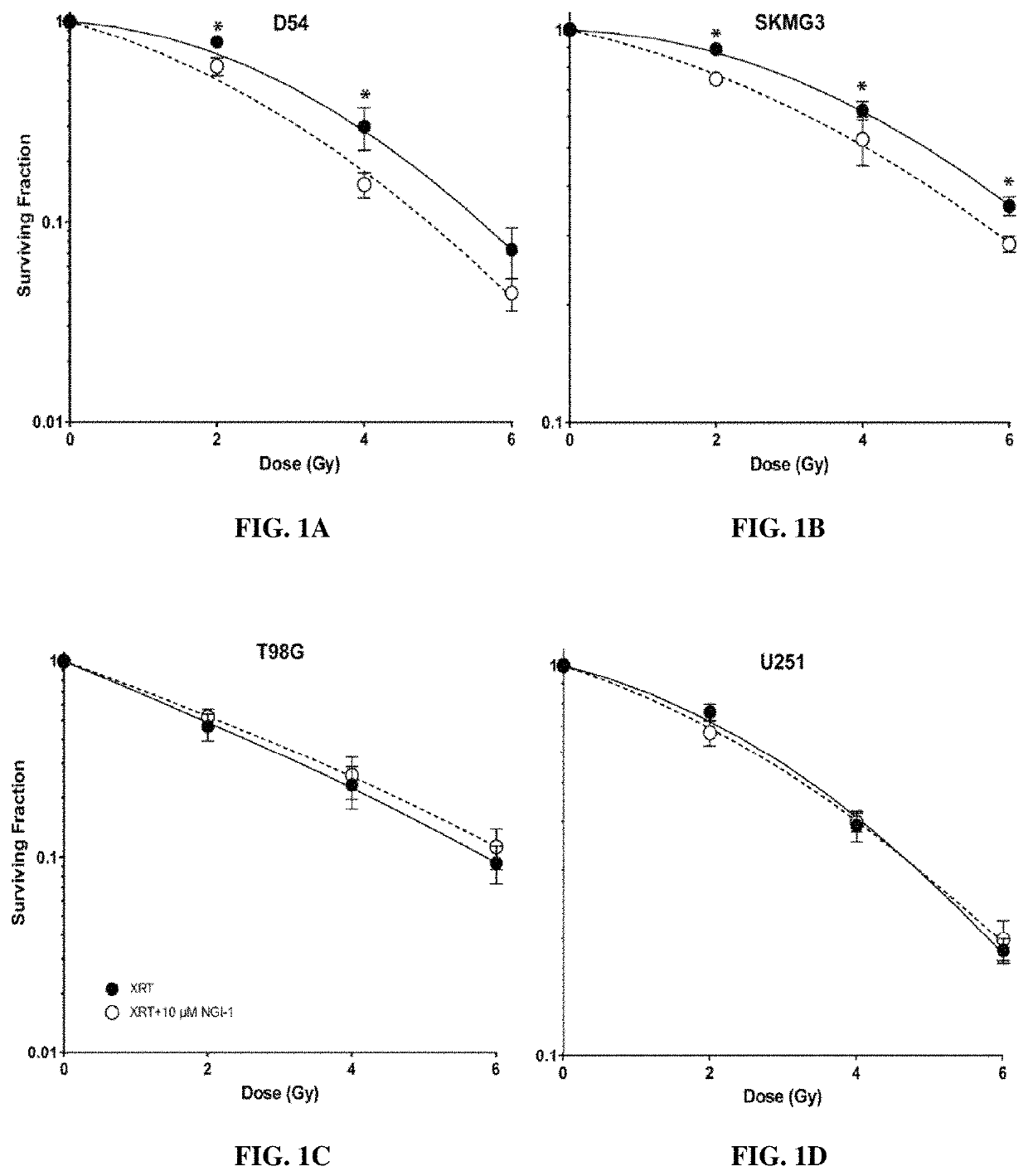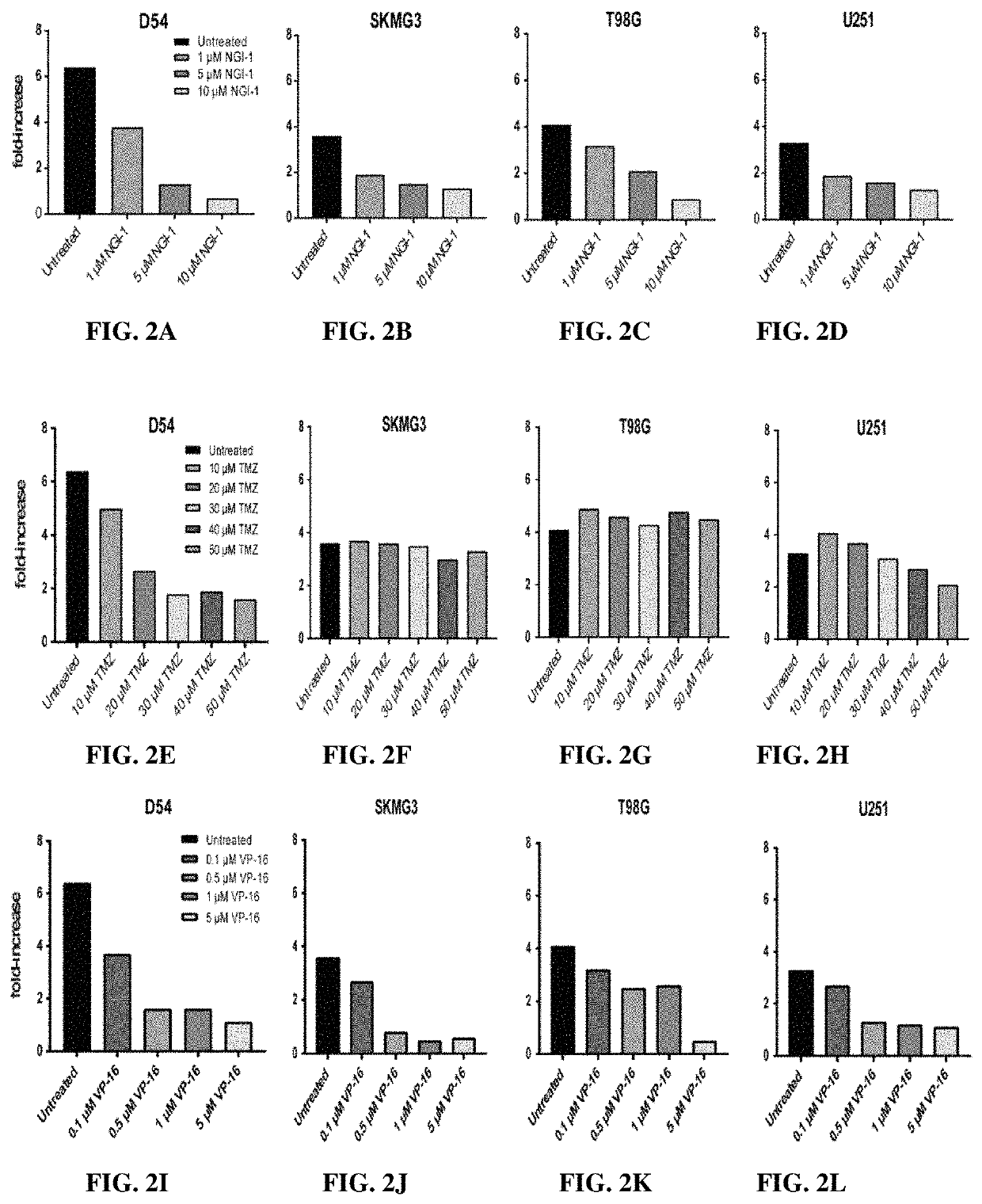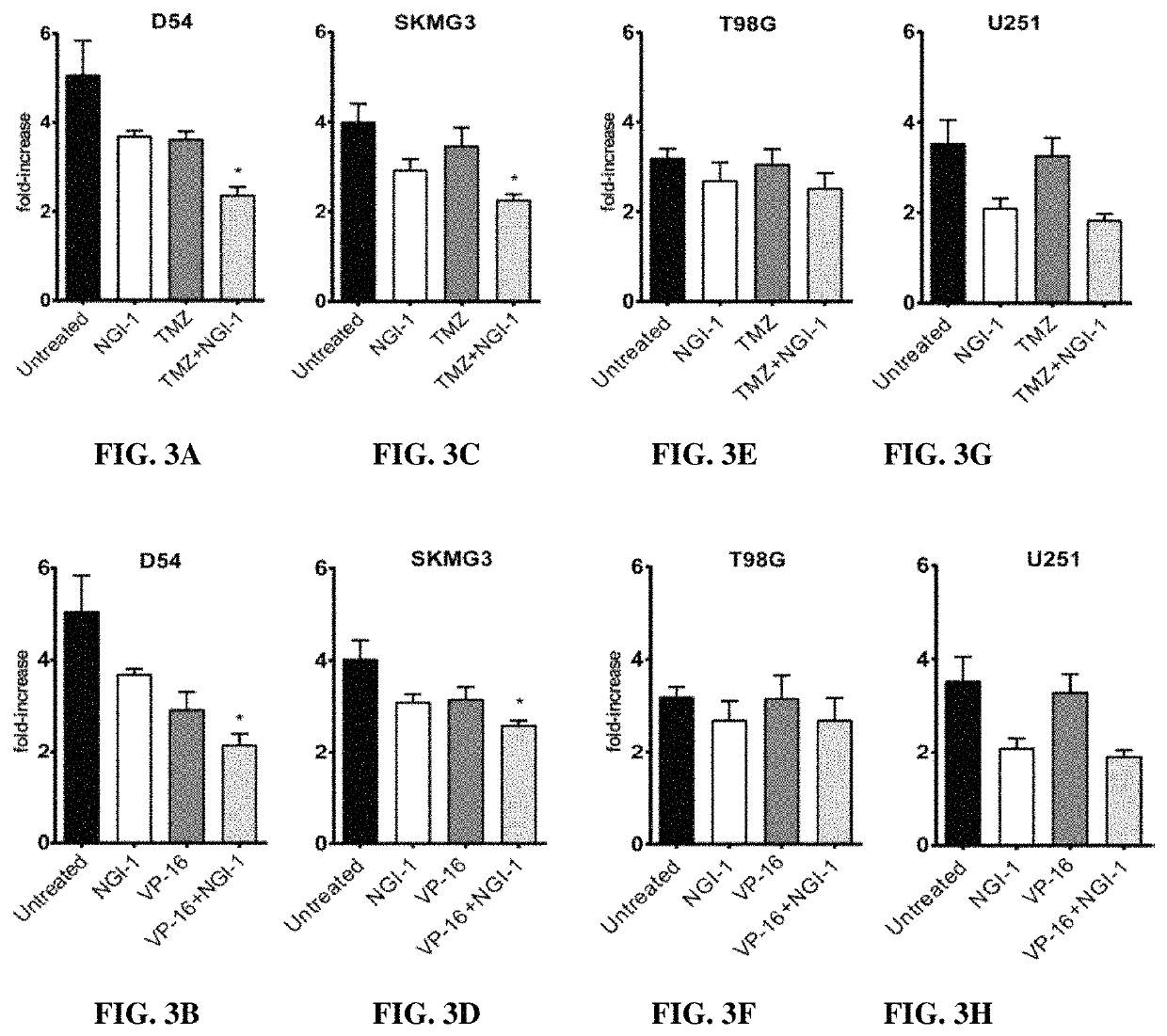Particle formulation with polycation complex
a polycation complex and particle technology, applied in the direction of capsule delivery, microcapsules, drug compositions, etc., can solve the problems of significant hampered in vivo use of ngi-1 by its physico-chemical properties, and achieve the effects of reducing tumor burden, reducing tumor progression, and reducing tumor burden
- Summary
- Abstract
- Description
- Claims
- Application Information
AI Technical Summary
Benefits of technology
Problems solved by technology
Method used
Image
Examples
example 1
Formulating NGI-1 for Improved In Vivo Delivery
[0242]NGI-1 particles were fabricated by complexation of NGI-1 with polyethylenimine (PEI), and then encapsulation into diblock poly(lactic acid)-poly(ethylene glycol) (PLA-PEG) nanoparticles (NPs) using a nanoprecipitation technique.
[0243]NGI-1 was dissolved in DMSO at 50 mg / ml.
[0244]PEI was dissolved in DMSO at 50 mg / ml.
[0245]The NGI-1 and PEI solutions were then mixed at a 6:1 ratio of PEI:drug by weight.
[0246]The solution was vortexed for ˜10 s and then incubated at room temperature for 15 min.
[0247]PLA-PEG (10-5 kDa) was then dissolved in DMSO at 20 mg / ml using water bath sonication.
[0248]After the 15 min incubation period, the PEI / NGI-1 solution was then added to the PLA-PEG solution at a 10% ratio of NGI-1:PLA-PEG by weight.
[0249]This combined solution was briefly vortexed and then water-bath sonicated to ensure uniform mixing.
[0250]The solution was then added dropwise to distilled H2O under vortex at a final ratio of 1:5 organic...
example 2
rupts RTK Signaling in Glioblastoma Cells
[0253]Baro, et al., “Oligosaccharyltransferase inhibition Reduces Receptor Tyrosine Kinase Activation and Enhances Glioma Radiosensitivity,”Clin Cancer Res. 2018 Jul. 2. pii: clincanres.0792.2018. doi: 10.1158 / 1078-0432.CCR-18-0792, and all of the Supplementary Data associated therewith, are specifically incorporated by references herein in their entireties.
[0254]Receptor tyrosine kinases (RTK) are transmembrane glycoproteins that regulate downstream signaling involved in cell proliferation and survival. Receptor overexpression or activation caused by mutation is important for the development and progression of many tumors including glioblastoma (GBM), an incurable malignant brain tumor (Xu and Huang, Cancer Res., 70:3857-60 (2010), Casaletto and McClatchey, Nat Rev Cancer, 12:387-400 (2012)). RTKs such as ErbB2 and EGFR, as well as the RTK ligand, VEGF, have been successfully targeted in multiple tumor types both as monotherapies or combined...
example 3
iosensitizes Gliobastoma Cell Lines with Activated ErbB Receptors
Materials and Methods
[0267]Radiation Survival and Proliferation Assays
[0268]Clonogenic survival assays were performed with cells treated in the presence or absence of 10 μM NGI-1 48 hours before radiation and maintained until cells were re-plated. Radiation (XRT) doses of either 0, 2, 4, or 6 Gy were delivered with a Precision X-ray 320-kV orthovoltage unit at a dose rate of 2 Gy / 45 seconds (PXI X-Ray Systems). Twenty-four hours following XRT cells were washed, trypsinized, and re-plated in triplicate wells to determine clonogenic survival. Cultures were grown for 14 days, washed once with 1×PBS, and stained with 0.25% crystal violet in 80% methanol. Colonies with >50 cells were counted and clonogenic cell survival differences for each treatment were compared using survival curves generated from the linear quadratic equation using GraphPad Prism7 (GraphPad Software Inc.). Growth rates were determined by CellTiter 96 No...
PUM
| Property | Measurement | Unit |
|---|---|---|
| diameter | aaaaa | aaaaa |
| diameter | aaaaa | aaaaa |
| diameter | aaaaa | aaaaa |
Abstract
Description
Claims
Application Information
 Login to View More
Login to View More - R&D Engineer
- R&D Manager
- IP Professional
- Industry Leading Data Capabilities
- Powerful AI technology
- Patent DNA Extraction
Browse by: Latest US Patents, China's latest patents, Technical Efficacy Thesaurus, Application Domain, Technology Topic, Popular Technical Reports.
© 2024 PatSnap. All rights reserved.Legal|Privacy policy|Modern Slavery Act Transparency Statement|Sitemap|About US| Contact US: help@patsnap.com










